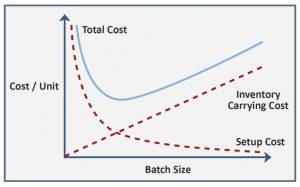Batch Size Considerations for Parylene Production
Posted by Sean Horn
Friday, April 14, 2017 7:35
@ 7:35 AM
The parylenes consist of a range of para-xylylene polymers whose desirable physical and electrical properties support expansive utilization as conformal coatings for electronic and medical devices Parylene films are applied to substrates via a chemical vapor deposition (CVD) process, which deposits monomeric parylene vapor homogeneously and deeply into the surface of printed circuit boards (PCBs) and related assemblies/components.
In comparison to liquid conformal coatings – acrylic, epoxy, silicone or urethane — parylene offers highly desirable physical and electrical properties, performing where wet coatings might be compromised or insufficient. Among parylene’s many advantages are:
- a high degree of coating conformality and uniformity,
- ultra-fine layers of pinhole-free protection,
- ready adaptation for MEMS/nano technology,
- consistent coating thicknesses,
- accessing assemblies’ odd substrate surfaces, such as areas of shadowing or low standoff height, and
- rapid heat dissipation from the underlying components, minimizing temperature-related degradation.
Despite these advantages, the application of parylene film to PCBs is complicated by several failure mechanisms that require adroit management to assure successful implementation of the CVD procedure. One of the most important is supervision of the batch process, wherein designated consignments of PCBs and other products undergo parylene application in the deposition chamber.
Batch Processing as a Production System

Typically, batch process production manufactures goods in sequential stages, that are in line but disconnected for performances at different workstations. Each lot of products – in this case PCBs, medical devices or other related items – comprises a batch coated by parylene CVD. Normally, batch process workstations are situated closeby in a manufacturing facility; for parylene coating, a vacuum chamber is used for each coating batch, with processes following a progression that leads to a final stage, deposition of the coating.
Implemented in a closed-system vacuum subjected to persistent negative pressure, the Parylene process integrates the following steps as part of the batch coating process:
- initial vaporization,
- pyrolysis, and
- deposition phases of the process.
Chambers are typically small, which can limit batch size. The flexibility of batch processing supports just-in-time (JIT) manufacturing. Lean JIT batch-runs respond specifically to customer demands, largely eliminating outsized product inventories, while reducing waste in manufacturing/warehousing procedures. With parylene dimer materials costing between $200.00 – $10,000.00 per pound, and the need for worker interaction throughout production, a major consideration in managing CVD is the minimization of wasted resources and effort.
Aspects of Parylene Batch Processing
As described above, parylene batch coating procedures differ appreciably from conventional production line operations. Composed of a succession of substrate pre-treatment stages, coating processes are documented through a formal control plan that specifies batch size; methodical logistics for implementing the batch coating require controlled staging to generate both production efficiency and cost-effective coating operations.
The batch coating process requires structured handling and defined time periods. Regarding chamber load, if the same parylene type is used and the coating specifications are equivalent, the actual amount of time the product to-be-coated undergoes parylene deposition varies very little, when comparing small to larger batches. In general, time-consuming CVD is confined to small-batch production, which can vary between 8 – 24 hours, despite smaller batch-size.
Thus, a greater quantity of product in the deposition chamber for coating generally leads to a more economical batch coating process. However, CVD technology has built-in limitations that negate further reduction of chamber time, regardless of batch size. Therefore, real-time coordination between production and quality control processes must be rigorously synchronized to minimize wasted time and resources, while maintaining client specifications, consistently between orders. To this end, the parylene CVD process is effective because of:
- the quality of coatings it generates,
- it exceptional controllability, and
- capacity for procedural replication
- deliver extremely consistent results from batch-to-batch.
Yet, these factors do not much diminish the generally limited throughput of parylene batch processing. Time-consuming CVD reduces operational efficiency, particularly with small-batch production dominating most coating assignments. Deposition chambers are somewhat costly and tend to be physically small, reducing total quantity of product coated during any single coating session. Turnaround-time required to complete coating assignments places further constraints on batch-size, a condition that cannot be overstepped since processes must be fully completed to assure successful coating application. Unused chamber volume reduces cost efficiency, so closely matching the batch size to the chamber capacity contributes to cost effectiveness. Diamond maintains both larger and small chambered coating machines to better optimize customer/company expense on coating assignments.
To learn more about the parylene process and how to use batch size to keep coating costs to a minimum, download our whitepaper now:
How to Keep Parylene Costs Low Whitepaper
Comments
Homepage 4/17/2020. 10:17:10 AM
... [Trackback] [...] Informations on that Topic: blog.paryleneconformalcoating.com/whats-the-difference-between-potting-and-conformal-coating/ [...]

londondrugscanada.bigcartel.comlondon-drugs 4/17/2020. 10:17:10 AM
cialis uk https://londondrugscanada.bigcartel.com/london-drugs This is nicely expressed. !